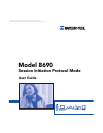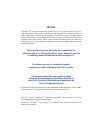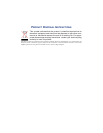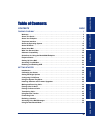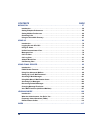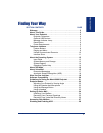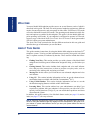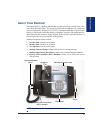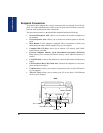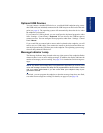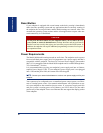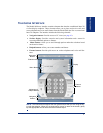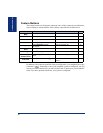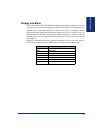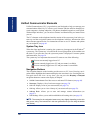
2
Inter-Tel
®
Model 8690 User Guide (SIP Mode)
FINDING YOUR WAY
WELCOME
Your new Model 8690 endpoint provides access to several features, each of which is
described in this guide. The Inter-Tel multi-protocol endpoints support two different
modes of network protocols, and can operate in either Inter-Tel Protocol (ITP) mode
or Session Initiation Protocol (SIP) mode. The operating mode determines which fea-
tures and options are enabled on the endpoint. This guide is for the Model 8690 end-
point operating in SIP mode. If your endpoint is configured to operate in ITP mode,
request a copy of the Model 8690 User Guide: Inter-Tel Protocol Mode (part number
550.8116) from your system administrator.
The About This Guide section below lists the different sections in this user guide and
describes the type of information you can find there.
ABOUT THIS GUIDE
This guide contains instructions for using the Model 8690 endpoint on the Inter-Tel
®
telephone system. To help you find information more quickly, this guide is divided
into six separate sections, as indicated by the tabs. These sections include the follow-
ing:
• Finding Your Way: This section provides you with a picture of the Model 8690
endpoint and includes general information designed to help you find what you
need.
• Getting Started: This section includes basic endpoint and voice mail informa-
tion, and provides instructions on how to perform everyday tasks, such as
answering calls, making calls, and using voice mail.
• Moving On: In this section you’ll learn how to use advanced endpoint and voice
mail features.
• Using UC: This section includes information on how to use the advanced com-
munication features available with Unified Communicator
®
(UC).
• Using E-Mail Reader: This section includes information on how to use the
advanced messaging features available with E-Mail Reader.
• Learning More: This section outlines how your administrators can help if you
experience a problem with your endpoint. It also provides you with a list of Fre-
quently Asked Questions (FAQs) so you can troubleshoot problems and learn
more about the system.
In addition, this guide contains a list of default feature codes (see page 114) and an
index (see page 117) for easy reference.
NOTE: Because the telephone system is very flexible and programmable, the proce-
dures for using the features might vary slightly from the descriptions in this guide. If so,
your trainer or system administrator can tell you how your system differs and how to
use the features.



